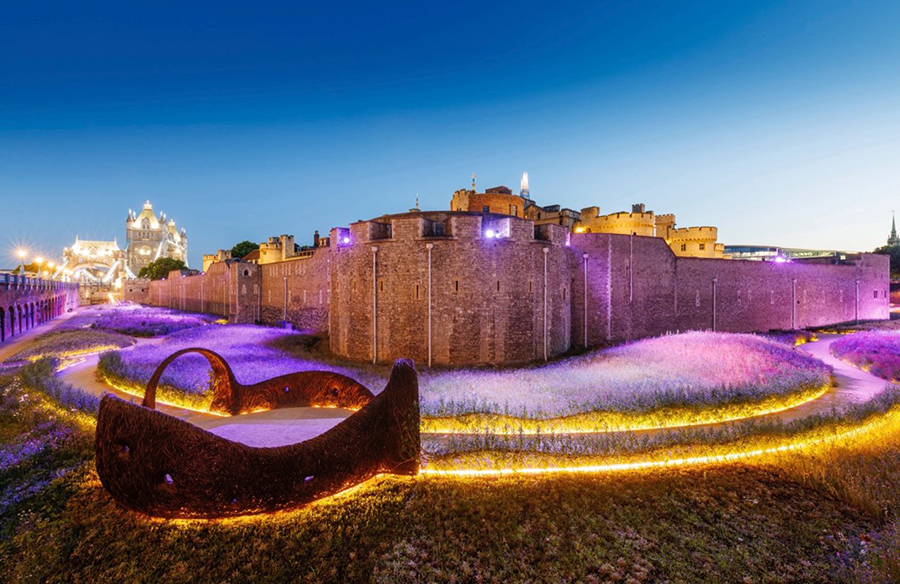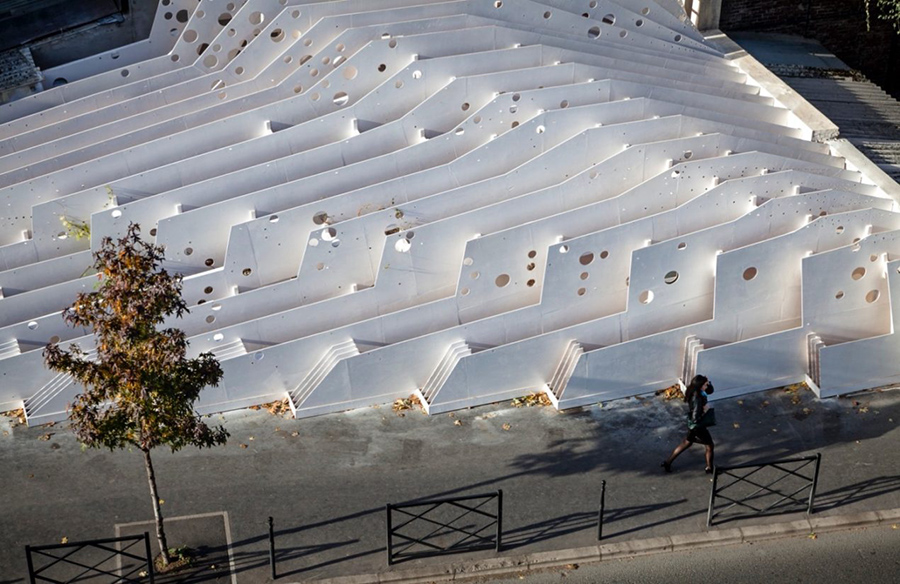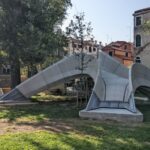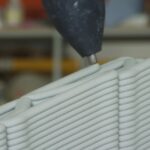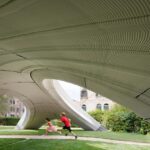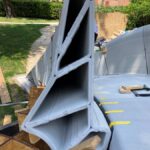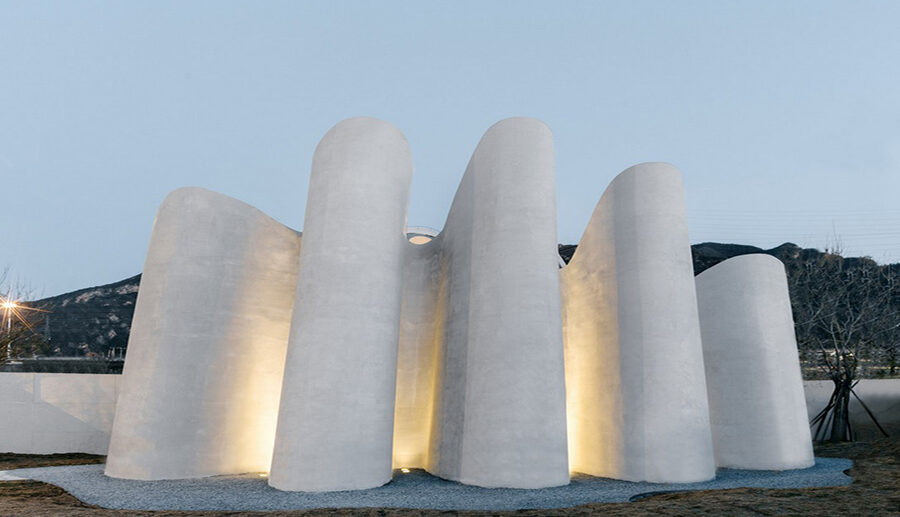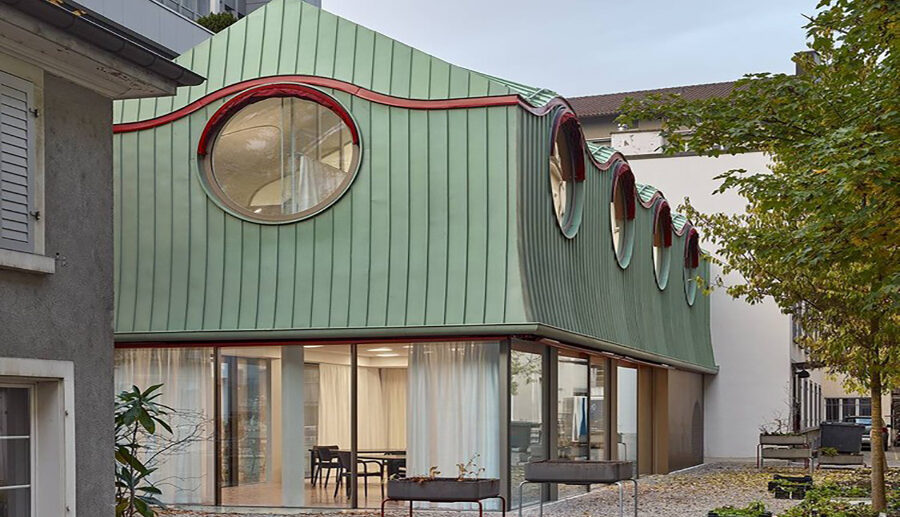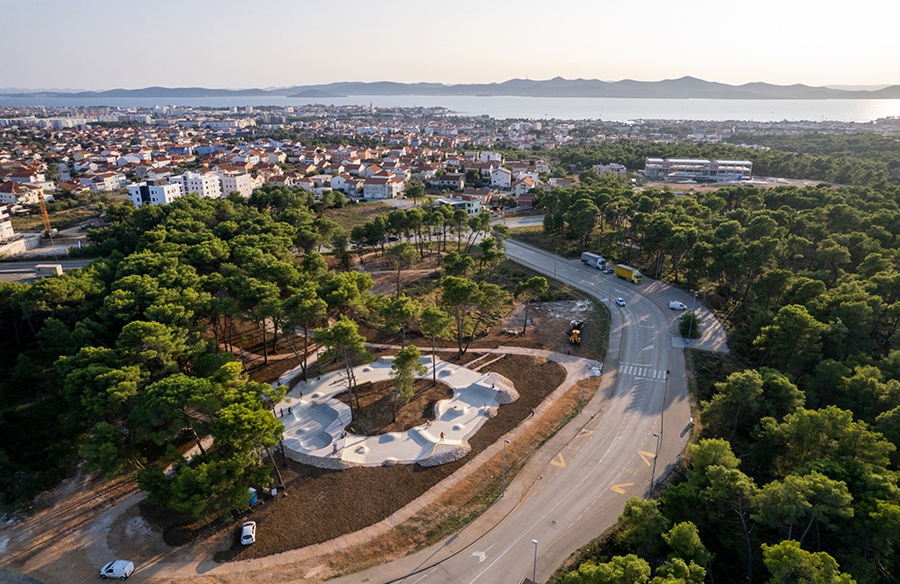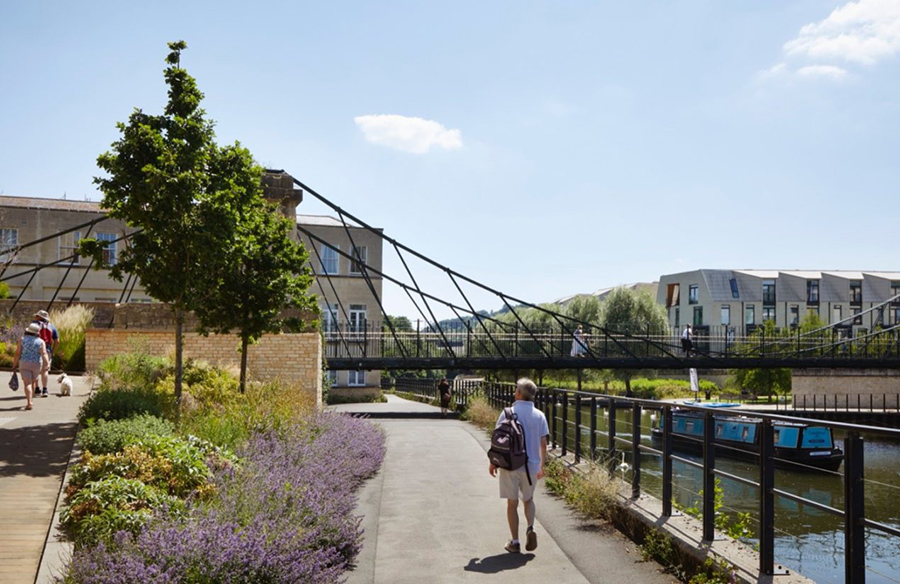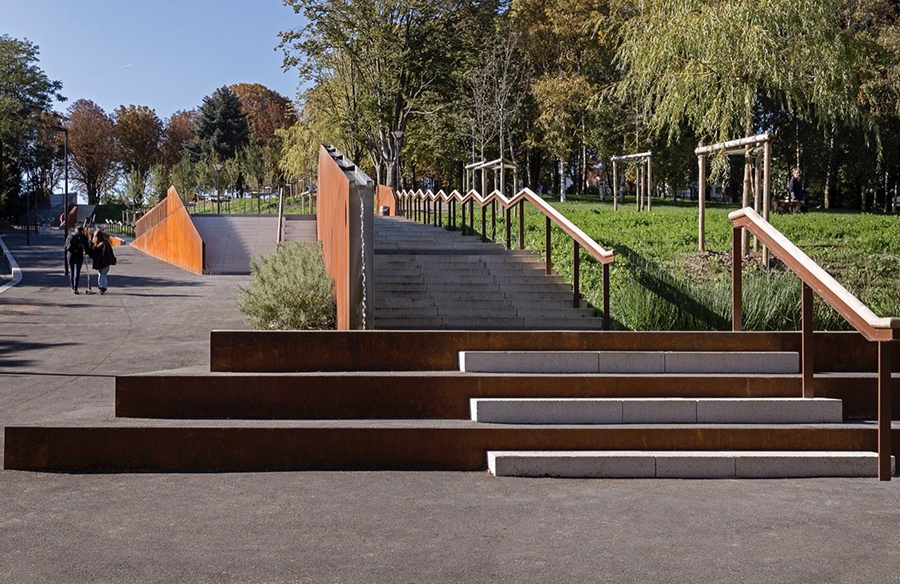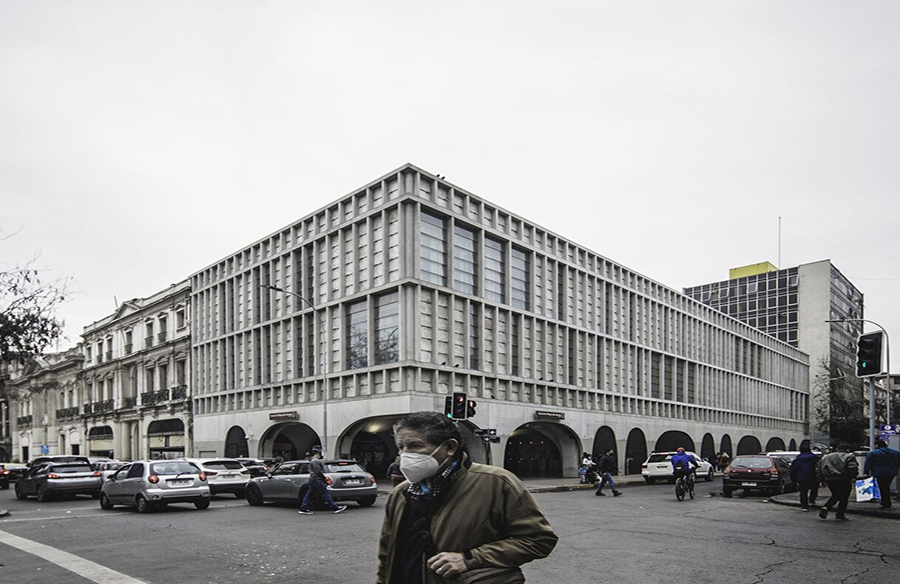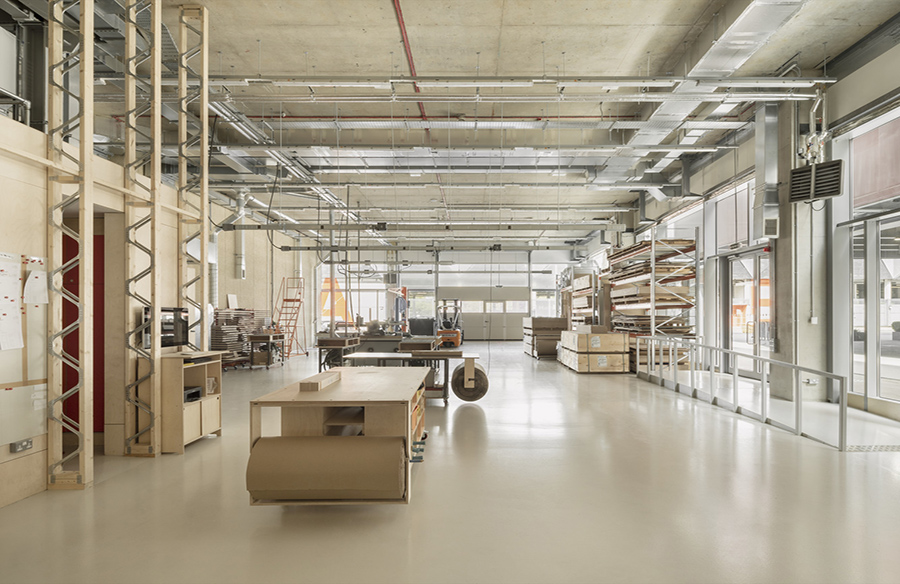Reinventing Pedestrian Bridges: The Striatus Bridge Project
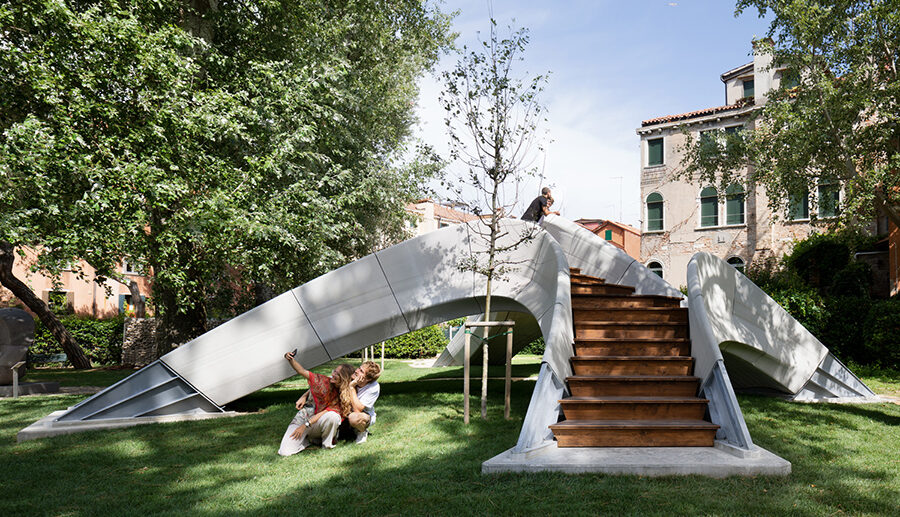
Introduction: Fusion of Tradition and Innovation
Located in Venice, Italy, the Striatus Bridge stands as a groundbreaking architectural marvel, jointly crafted by the Block Research Group and Zaha Hadid Architects. Unveiled at the Venice Architecture Biennale until November 2021, this 16×12-metre footbridge represents a harmonious blend of traditional masonry techniques and cutting-edge 3D printing technology.

Structural Ingenuity: The “Striatus” Concept
Named after its structural logic, the Striatus Bridge embodies a revolutionary approach to construction. Composed of 3D-printed concrete blocks assembled without mortar, the bridge adopts a “striated” compression-only design, eliminating the need for steel reinforcement. This innovative technique not only reduces material usage but also minimizes CO2 emissions associated with conventional reinforced concrete construction.
Sustainable Construction: Redefining Industry Norms
Amidst growing environmental concerns, the Striatus Bridge project offers a beacon of sustainability. By leveraging additive manufacturing processes and specially formulated concrete ink developed by Holcim, the project pioneers a new era of eco-friendly construction. The precise application of concrete at orthogonal angles ensures structural integrity without the need for additional reinforcement or post-tensioning.
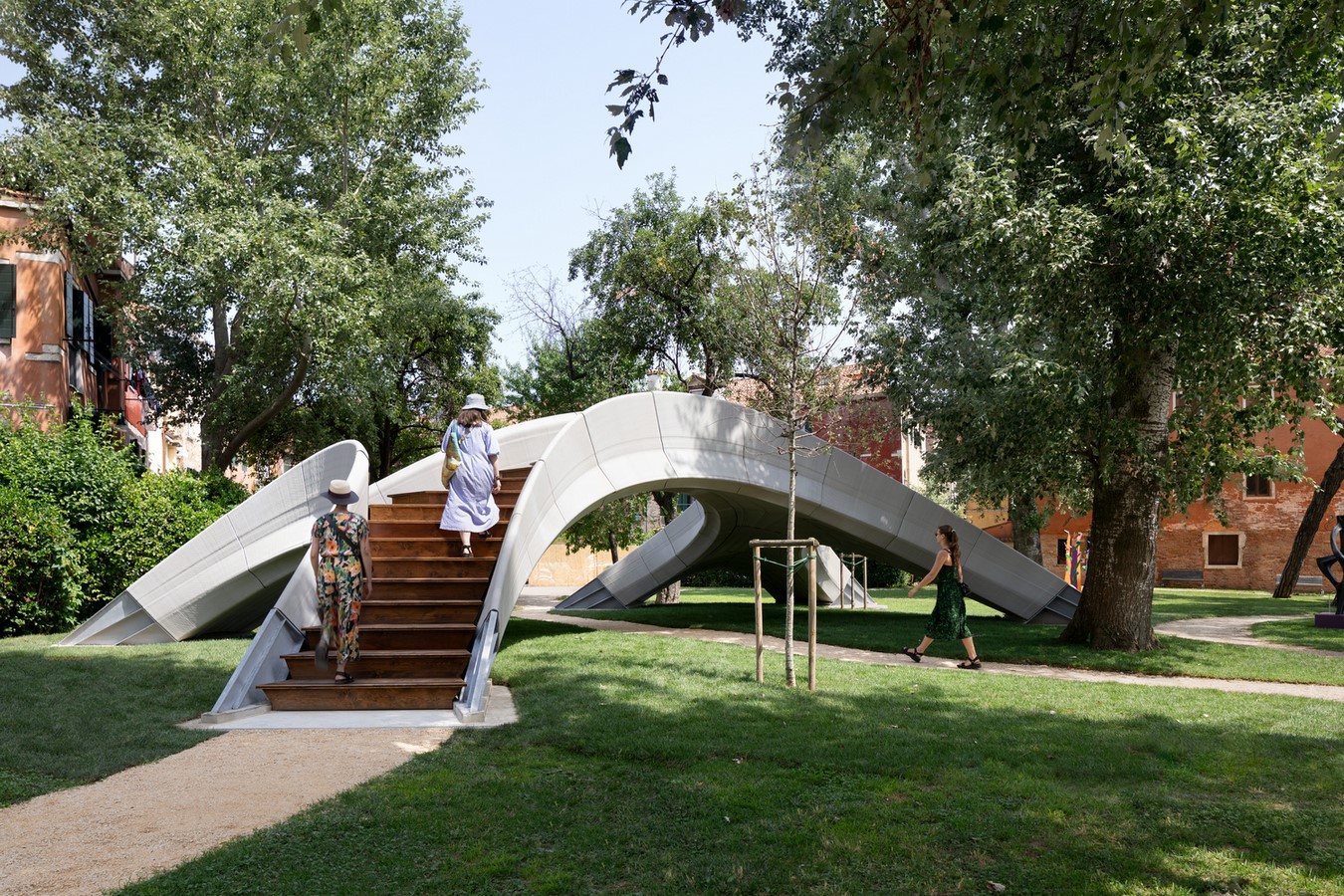
Collaborative Endeavors: Engineering Excellence
The Block Research Group, in collaboration with Zaha Hadid Architects, spearheaded the construction of the 12-by-16-metre arched footbridge in Venice. Utilizing compression-only principles reminiscent of traditional masonry bridges, the Striatus Bridge demonstrates stability through geometric optimization. The dry-assembled construction technique further enhances structural robustness.
Technological Innovation: Advancing Concrete Fabrication
A key highlight of the project is the development of 3D-printed concrete ink, meticulously engineered to meet structural requirements. This innovative ink, applied at specific angles to optimize compressive forces, ensures cohesive block assembly without compromising durability. Professor Philippe Block emphasizes the precision of 3D concrete printing, minimizing material waste while adhering to traditional construction principles.

Future Prospects: Versatility and Sustainability
One of the most remarkable features of the Striatus Bridge is its modular design, enabling easy disassembly and relocation without the need for mortar. This adaptability underscores the project’s commitment to sustainability and resource efficiency. In a world increasingly focused on sustainable development, the Striatus Bridge project sets a precedent for environmentally conscious infrastructure design and construction.
Conclusion: A Testament to Innovation and Sustainability
The Striatus Bridge epitomizes the intersection of architectural innovation and environmental stewardship. Through a fusion of traditional craftsmanship and state-of-the-art technologies, this remarkable structure redefines the possibilities of sustainable construction. As an emblem of ingenuity and collaboration, the Striatus Bridge stands as a testament to the power of design to shape a more sustainable and resilient future.


